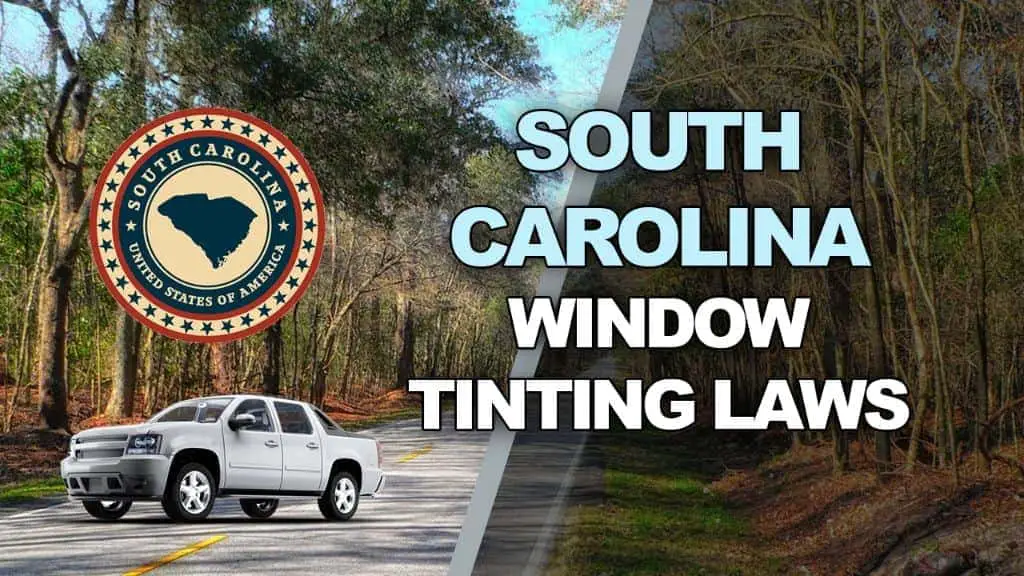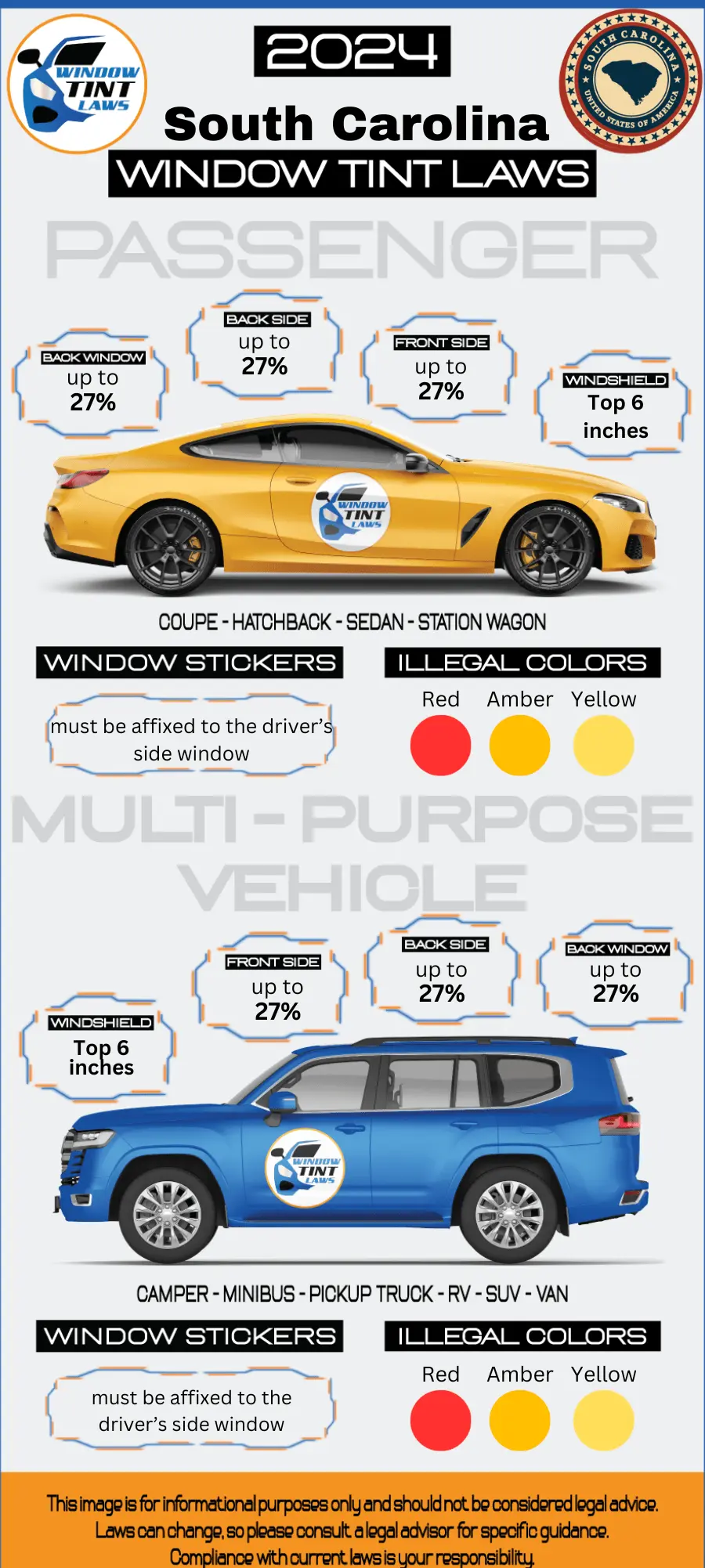

Article Created by Ryan Pietrzak
Last updated on February 14, 2024South Carolina Tint Laws – 2024 Updated Legal Tint Limit
Please note that South Carolina Tint Laws Regulation can change daily and may be interpreted differently at the city or county level. We recommend verifying this information with your local DMV or law enforcement agencies. We have manually fact-checked this content using official state resources. South Carolina enacted tinting laws in 1992. If any information provided is incorrect or outdated, please contact us so we can make the necessary corrections. Thank you.
2024 South Carolina Tint Laws – Legal Tint Limit For Passenger Vehicles.
- Front Windshield: Non-reflective tint is allowed on the top 6 inches of the windshield.
- Front seat side windows: up to 27% tint darkness allowed. Front side windows must allow at least 27% light transmission, restricting tint to 27% or lighter.
- Back seat side windows: up to 27% tint darkness allowed. Back side windows must allow at least 27% light transmission, also limiting tint to 27% or lighter.
- Rear window: up to 27% tint darkness allowed. The rear windshield must allow at least 27% light transmission and tint
2024 South Carolina Tint Laws – Legal Tint Limit For Multi-Purpose Vehicles
- Front Windshield: Non-reflective tint is allowed on the top 6 inches of the windshield.
- Front seat side windows: up to 27% tint darkness allowed
- Back seat side windows: Must allow more than 27% of light in.
- Rear window: Must allow more than 27% of light in

- Medical exemptions: South Carolina tint laws permit darker tints on front side windows with a doctor’s note
- South Carolina tint laws prohibit metallic or reflective tint on any of the windows
- South Carolina tint laws are statewide with no additional local regulations
- Violating South Carolina tint laws results in fines up to $500 per window.
What does VLT Mean according to South Carolina Tint Laws?
- Window tint film’s light transmission is measured as VLT (Visible Light Transmission) and each state has its own legal limits for VLT on car windows.
- A HIGHER VLT means that more light is allowed to pass through the window tint film.
- Example: a 75% tint will allow 75% of the light to pass through whereas a 5% tint will only allow 5% of the light to pass through, making the 5% tint a much darker film.
- South Carolina window tint laws has specific VLT limits for Passenger Vehicles and Multi-Purpose Vehicles.
FAQ’s Regarding South Carolina Tint Laws and South Carolina Legal Tint Limit
What is the darkest legal tint in South Carolina?
In South Carolina, the darkest legal tint for car windows is 27% Visible Light Transmission (VLT) for passenger vehicles. This percentage applies to the front side, back side, and rear windows. For multi-purpose vehicles (MPVs), the same 27% VLT applies to the front side windows.
Are police exempt from window tint laws in South Carolina?
Police cars in many states, including South Carolina, are often exempt from window tint laws. This exemption is due to the specialized needs of law enforcement officers. Tinted windows on police vehicles can enhance officer safety, protect the privacy of suspects, and conceal valuable equipment inside the vehicle
How do I get a tint waiver in South Carolina?
In South Carolina, obtaining a tint waiver requires a medical exemption. You will need to visit a licensed physician and obtain a written statement specifying your medical condition that necessitates window tinting for health reasons. This statement should then be submitted to the South Carolina Department of Motor Vehicles (SCDMV) along with the appropriate application form and fee to request a tint waiver.
How much is a tint ticket in South Carolina?
In South Carolina, the fine for a window tint infraction is a minimum of $200 or imprisonment of no more than 30 days for each offense. This applies if the tint on your vehicle’s windows does not comply with the state’s Visible Light Transmission (VLT) regulations.
Can you get pulled over for tint in South Carolina?
South Carolina has specific laws regulating window tint on vehicles. The allowable window tint darkness may vary depending on the type of vehicle and the location of the window. In South Carolina, you can get pulled over and cited for window tint violations if your vehicle’s window tint exceeds the legal limits.
How to get a Tint Exemption in South Carolina
Signed affidavit by a licensed physician or optometrist must be in the vehicle at all times. The affidavit must state that the person has a physical condition making it necessary to equip the vehicle with otherwise illegal window tint. Affidavits must be updated every two years.

Ryan Pietrzak
Creator of Windowtintlaws.us
Pennsylvania
